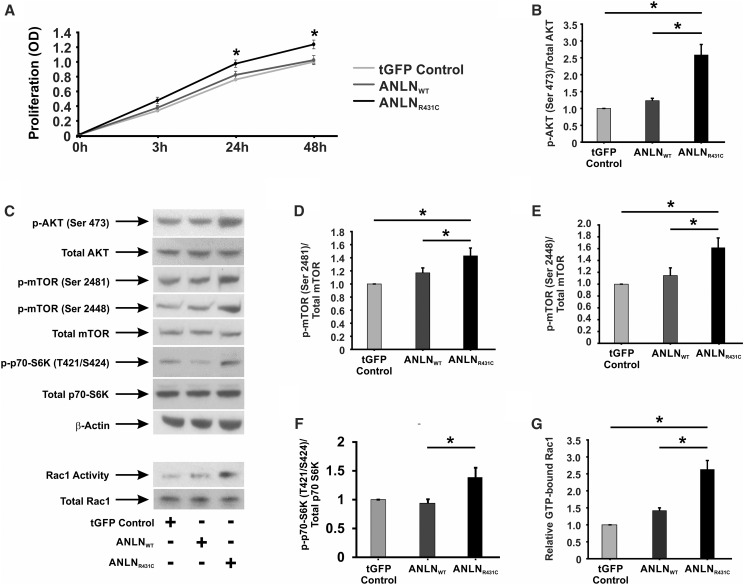Figure 3.
AnillinR431C (ANLNR431C)-expressing podocytes display an increase in proliferation and activation of the phosphoinositide 3-kinase (PI3K)/AKT/mTOR/Rac1 signaling axis. (A) Proliferation assays were performed on control, ANLNWT, and ANLNR431C podocyte cell lines using a CCK colorimetric assay with data collected at 0, 3, 24, and 48 hours. ANLNR431C podocytes display significantly increased proliferation at the 24- and 48-hour time points (n=13; P=0.02 and P=0.001, respectively). (B) Western blot quantification revealed a significant difference between GFP and experimental cell lines as well as a significant increase in the ANLNR431C-expressing podocytes compared with ANLNWT podocytes when exposed to phosphorylated AKT S473 (n=6; P=0.03). (C) Representative Western blots are depicted for phospho-AKT S473, total AKT, phospho-mTOR S2481, phospho-mTOR S2448, total mTOR, phospho–p70-S6K T424/S421, total p70-S6K, b-actin, GTP-bound Rac1, and total Rac1. (D–F) This same pattern of increased activation in ANLNR431C compared with ANLNWT was revealed when examining mTOR phosphorylation at serine 2481 and serine 2448 as well as the downstream effector kinase p70-S6K at Thr424/Ser421 (n=6, P=0.05; n=5, P=0.05; n=5, P=0.02, respectively). (G) Rac1 activity assays using a PAK bead pulldown assay to analyze GTP-bound active Rac1 showed an increase in Rac1 activity in ANLNR431C-expressing podocytes compared with ANLNWT (n=3; P<0.01). tGFP, turbo GFP. *P<0.05.

